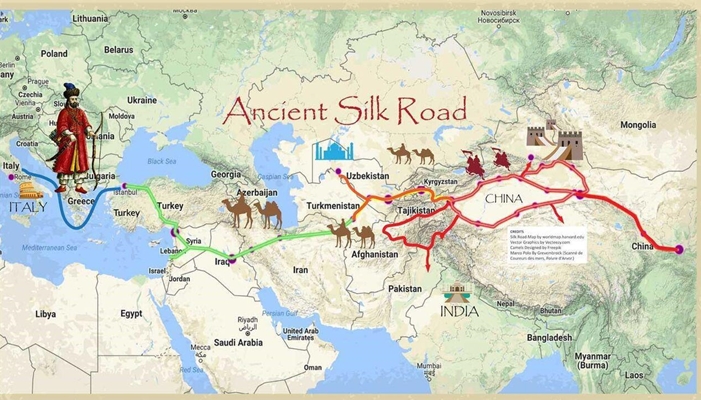Ali-Asghar Mounesan, who was visiting China at the invitation of his Chinese counterpart to attend the Ancient Civilizations Forum, made the comments in an interview with China Radio International.
In the interview, the minister made it clear that Iran, as a major country in the ancient Silk Road, is ready for stronger participation in the One Belt, One Road project.
“Many countries participating in the Ancient Civilizations Forum have been part of the Silk Road in the past, and the route, which passed through Iran, was a very important path for trade in the Asian and European countries,” the Iranian minister added.
Highlighting the Silk Road’s role in connecting the nations, allowing people to know each other, and sharing the cultural elements, Mounesan hailed China’s president for his efforts to revive the Silk Road by proposing the One Belt, One Road initiative.
The minister also noted that he has visited China with a delegation of tourism industry activists at the invitation of China’s Minister of Culture and Tourism to take part in the Ancient Civilizations Forum.
Mounesan then pointed to the fruitful meetings between the Iranian and Chinese travel agencies, saying Iran could provide the Chinese people and travel agencies with information about its historic and natural attractions.
He went on to say that Iran has lifted visa requirement for the Chinese tourists since four months ago, citing the close and amicable ties between Tehran and Beijing, China’s large tourism market, and an extensive plan that Iran has devised to enhance tourism interaction with China.
According to the minister, statistics show an upward trend in the visits to Iran by the Chinese tourists over the past four months.
Mounesan then pointed to 24 Iranian sites inscribed on the UNESCO’s World Heritage List, saying they include 22 cultural sites and two natural sites, namely the Lut Desert and the Hyrcanian Forests.
Iran has up to 35,000 sites that have been registered nationally, many of which are waiting to be inscribed on the World Heritage List, the minister said, adding that there are around one million known historic sites and more than 600 museums in Iran.
He also noted that 13 Iranian cultural practices and expressions have been inscribed on the List of the Intangible Cultural Heritage of Humanity.
Highlighting the Iranian administration’s efforts to protect the cultural heritage, Mounesan said the Parliament has ratified a law that provides strong support for the cultural heritage in Iran, and has also upgraded the Cultural Heritage, Tourism and Handicrafts Organization to the status of a Ministry.
Lauding China’s rapid progress, the minister expressed hope for the expansion of relations between Iran and China and for sharing the experiences in order to build the two countries and provide a better life for the two nations.
“China and Iran are two countries with ancient civilizations, and have played a leading role in shaping the human civilization. We have great historical and cultural capacities and many things in common. The two countries are undoubtedly interested in getting to know each other’s civilizations,” Mounesan concluded.
